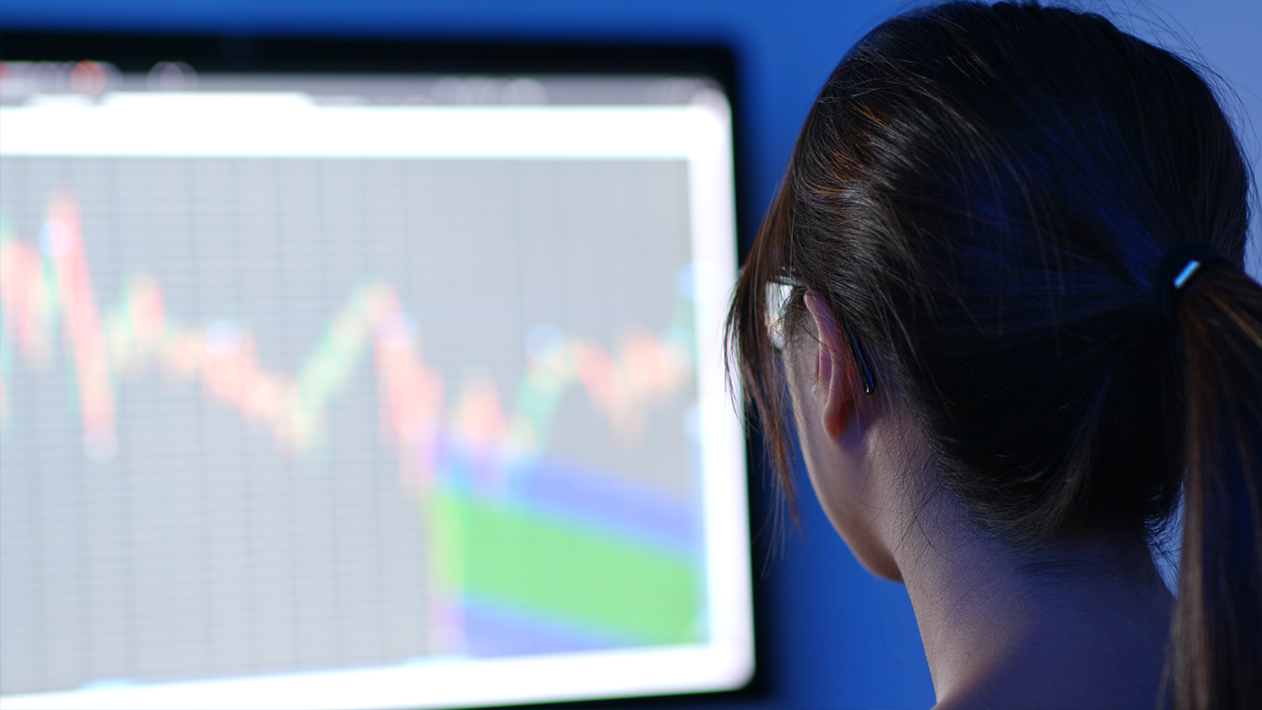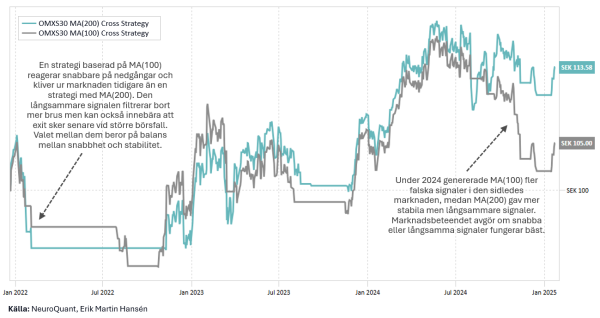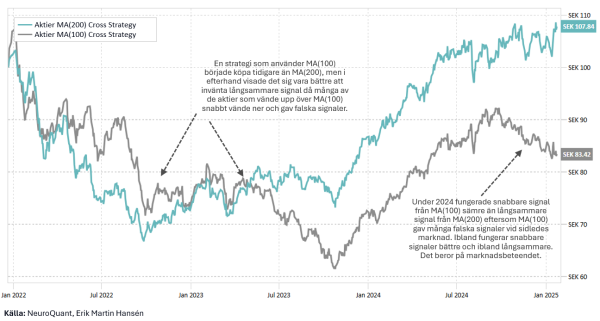Fast vs. slow signals: What works best?

In systematic trading, there is an ongoing debate about whether fast or slow signals are most effective. Both have their advantages and disadvantages, and the choice between them depends on one's strategy, market behavior, and risk management.
In this post, we will go through the differences, strengths, and weaknesses of these two types of signals.
What is meant by fast and slow signals?
Fast signals react to market changes with a short delay. They can be, for example,
- Breakout to new 50-day high
- Trend filter calculated over the last 50 or 100 days
The advantage of fast signals is that they can catch trends early and react quickly to changes. The disadvantage is that they often generate more false signals and require more frequent rebalancing.
Slow signals takes longer to confirm a trend. Examples of slow signals include:
- 200-day moving average
- 12-month momentum
- Macro-based models
These signals have the advantage of being more stable and less sensitive to market noise, which can lead to fewer trades and lower transaction costs. The disadvantage is that they can be slow to react to market changes.
Lessons from 2024
In the report Themes of 2024 (PDF) by Kaminski and Zhao analyzes the performance of trend-following funds over the year. A clear conclusion was that slow signals generally outperformed fast ones.
The reason was that 2024 was filled with short-lived trends and rapid reversals, which meant that strategies with shorter time horizons often got 'clipped', i.e. the strategy exited a position and the price then turned back up.
Market expectations of interest rate cuts from the Fed, geopolitical uncertainty and currency fluctuations contributed to trends looking promising but then quickly reversing.
What worked best on the Stockholm Stock Exchange?
Let's try two different strategies:
- Buy and sell OMXS30 based on 100-day moving average
- Buy and sell OMXS30 based on 200-day moving average
A strategy using MA(100) exited the market faster during the 2022 stock market crash compared to a strategy using a slower signal such as MA(200).
In 2024, faster signal from MA(100) worked worse than slower signal from MA(200) because MA(100) gave many false signals in sideways market. Sometimes faster signals work better and sometimes slower. It depends on the market behavior.
 We can also test a strategy that trades stocks on the Stockholm Stock Exchange. The strategy allows a maximum of 15 companies in the portfolio and buys and sells based on a moving average to illustrate a simple trend-following strategy.
We can also test a strategy that trades stocks on the Stockholm Stock Exchange. The strategy allows a maximum of 15 companies in the portfolio and buys and sells based on a moving average to illustrate a simple trend-following strategy.
Even for this strategy, slow signals performed better than fast signals in 2024.
 Fast or slow in 2025?
Fast or slow in 2025?
Should you act quickly on new trends or wait for longer confirmations before doing anything? This is an ever-present question, and 2024 gave us an interesting insight into this issue. The big problem is that it is extremely difficult to predict whether fast or slow signals will work best in the future.
For example, we have seen that:
- Fast signals have been more effective and have recovered more quickly from major trend breaks and crises (e.g. 2022), as they can react more quickly to major market changes.
- Slow signals tends to work better in environments where trends are more protracted and volatility increases are often false signals.
Professional players diversify speed
To manage this uncertainty, most professional trend followers don’t choose between fast or slow signals – they diversify. By combining signals at different speeds, you can reduce the risk of getting caught on the wrong side of a trend and increase the likelihood of capitalizing on the moves that do become permanent.
Kaminski and Zhao showed that the best results in 2024 came from strategies that used a mix of fast and slow signals. This reflects a fundamental principle of systematic investing: to avoid betting everything on a single parameter, as market dynamics are constantly changing.
Conclusion
Fast signals have their place, as do slow ones. None of them is universally superior, but their effectiveness depends on the market climate. Since we don’t know what 2025 will bring, it’s wise to diversify between different signal speeds – just like the pros do.